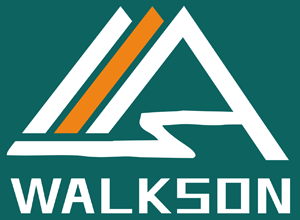When it comes to heavy machinery, what you see on the surface is just the tip of the iceberg. Underneath, a complex system of undercarriage components works tirelessly to support, propel, and stabilize these massive machines. In this blog, we'll delve into the world of undercarriage components, exploring their vital role in heavy machinery and construction equipment.
The Foundation of Heavy Machinery
Undercarriage Basics
The undercarriage of heavy machinery typically consists of several essential components, including tracks (or wheels), track frames, idlers, rollers, sprockets, and tensioning systems. Each of these plays a crucial role in the machine's performance and stability.
Tracks vs. Wheels
The choice between tracks and wheels depends on the specific application. Tracks are ideal for soft or uneven terrain, providing greater traction and lower ground pressure. Wheels are preferred for smoother surfaces and higher speeds.
The Role of Undercarriage Components
Support and Mobility
Undercarriage components are responsible for bearing the weight of the machine and providing mobility. They distribute the load evenly to prevent excessive ground pressure and sinkage.
Traction and Control
Tracks or wheels, in conjunction with sprockets and rollers, offer traction and control. They allow heavy machinery to navigate various terrains, from loose soil to rocky surfaces, with stability and precision.
Wear and Maintenance
Undercarriage components are subjected to significant wear and tear. Regular maintenance, including lubrication and inspection, is crucial to ensure their longevity and optimal performance.
The Diverse Applications
Construction Industry
In construction, undercarriage components are integral to excavators, bulldozers, and compact track loaders. They provide the stability needed for digging, grading, and moving heavy materials on construction sites.
Agriculture Sector
Agricultural machinery, such as tractors and combines, relies on undercarriage components for efficient farming operations. They enable these machines to work in diverse field conditions.
Mining Operations
In the mining industry, undercarriage components are found in massive equipment like draglines and shovels. They withstand the harsh conditions of mining sites and ensure continuous operation.
Forestry Equipment
Forestry machinery, such as harvesters and forwarders, uses undercarriage components to navigate dense forests and transport timber.
Military and Defense
Military vehicles, including tanks and armored personnel carriers, rely on rugged undercarriage components for maneuverability and durability in combat scenarios.
Undercarriage components may not always be in the spotlight, but they are the unsung heroes of heavy machinery and construction equipment. Without these critical elements, the performance and functionality of heavy machinery would be severely compromised. From construction sites to agricultural fields and mining operations, undercarriage components silently support the backbone of various industries, making it possible for these machines to conquer challenging terrains and accomplish remarkable feats.
 English
English  Deutsch
Deutsch  français
français  русский
русский  فارسی
فارسی  العربية
العربية  Español
Español  日本語
日本語  한국어
한국어  italiano
italiano  português
português  dansk
dansk  Suomi
Suomi 




